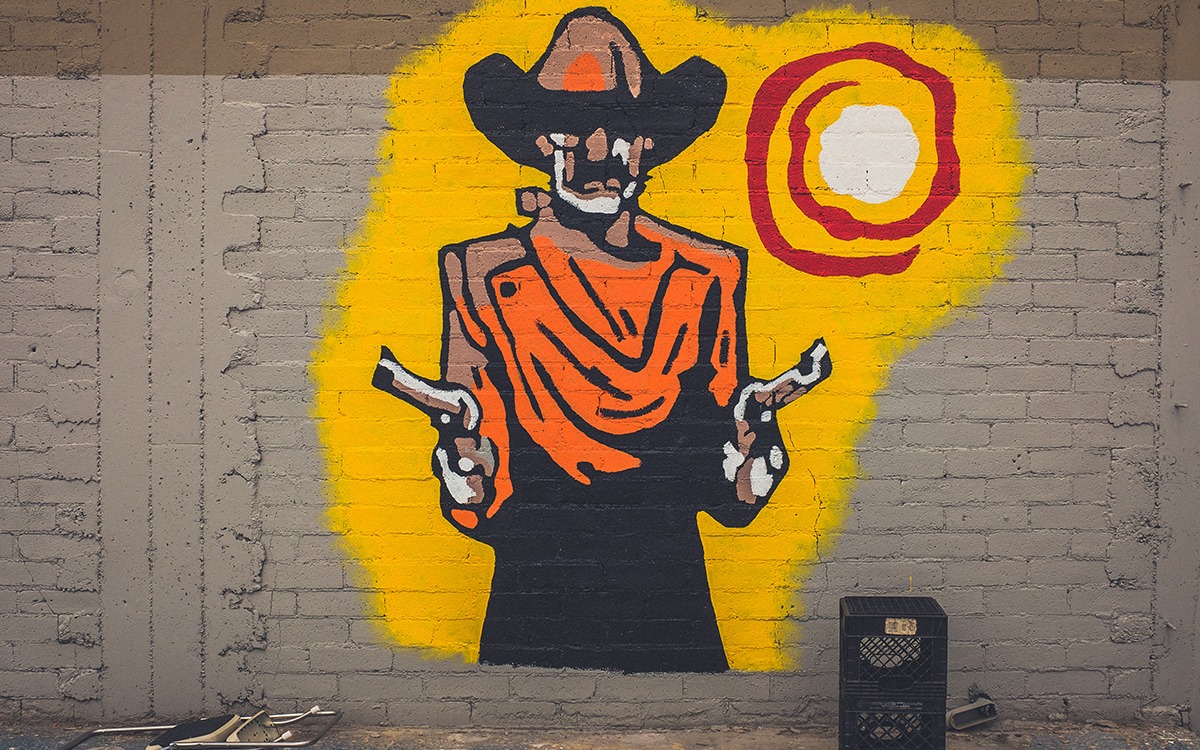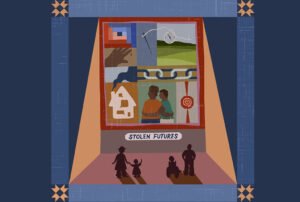
This is the fifth article in NPQ’s series titled Owning the Economy: Stories from Latinx Communities. Coproduced with the National Association for Latino Community Asset Builders, a national network of Latinx community development groups, this series highlights community preservation, land ownership, and business development efforts in Latinx and immigrant communities across the country.
Eviction is a common occurrence in San Francisco due to rising rents and frequent real estate ownership changes. Under California’s Ellis Act, passed in 1985, landlords are allowed to evict tenants to “go out of business.” The law was meant to allow landlords to retire from the rental business, not to evict tenants and flip property, but abuses are common.
Often, this is done by converting rental housing to condo ownership. A 2014 report found that between 1997 and 2013, over 10,000 tenants in San Francisco had been evicted from a total of 3,600 units using Ellis Act provisions. Stunningly, the same report found that 51 percent of Ellis Act evictions were done within one year of landlords acquiring the properties—a sure sign that the evictions had nothing to do with landlords “retiring” and everything to do with landlords seeking to extract more value from the properties they had purchased.
In 2022, tenants at 3661 19th Street, a 12-unit apartment building in San Francisco’s Mission District, not far from famed Dolores Park, faced imminent eviction. However, the fate of the residents of 3661 19th Street did not follow the usual script. Instead, this year, the landlords sold the building to the Mission Economic Development Agency—better known as MEDA—for $7.48 million. The residents of the apartment complex now have secure, permanently affordable housing.
This, in fact, is one of 35 properties that MEDA, with the support of the Mayor’s Office of Housing and Community Development’s Small Sites Program, has been able to acquire, preserving nearly 300 individual units for tenant residents in the process.
This year at MEDA, we are celebrating our 50th anniversary. But for our first 40 years, we were not involved in affordable housing development at all. A decade ago, that changed. It had to change—the Latinx 1 community residents demanded action, as did we.
This is our story.
A Community Organization Adapts to a Changing San Francisco
Gentrification pressures were tearing the neighborhood apart. Between 2000 and 2013, the number of Latinx residents had fallen by 25 percent.
To understand MEDA and its work, it is helpful to understand a little bit about the history of San Francisco’s Mission District, one of the city’s oldest neighborhoods. The Mission has long been home to waves of immigrants. Starting during the Great Depression and especially after World War II, the neighborhood—which extends south and east of Market Street, San Francisco’s main thoroughfare—became the city’s leading Latinx neighborhood.
As in many cities, Latinx residents in San Francisco did not necessarily choose to live in the Mission; in fact, many were restricted in where they could live due to redlining. But during the postwar period, the Mission became a supportive place for low-income and immigrant Latinxs. In the 1960s, city planners wanted to use federal urban renewal dollars to “improve” the neighborhood by building massive high-rises. The Latinx community successfully organized and resisted this. MEDA, a community organization formed in 1973, was a product of this activism.
For its first 40 years, MEDA supported our community in a variety of ways, including nationally recognized work in financial coaching and support for Latinx entrepreneurs. But owning affordable housing was not a primary focus area. That changed because we found that gentrification pressures were tearing the neighborhood apart. Between 2000 and 2013, the number of Latinx residents had fallen by 25 percent—8,000 people in total.
In 2014, MEDA launched its Community Real Estate program as an urgent response to stem the displacement happening to low-income and working-class families in the Mission District in the midst of a rising tech boom. To date, in addition to the nearly 300 units preserved through the Small Sites program, the real estate program has supported another 1,300 units through the construction of new housing and an additional 400 units through federally backed rental assistance demonstration housing. This is housing that was part of the public housing system that since 2014 has been directly managed by MEDA.
Developing a portfolio of over 2,000 units of housing—enough to stabilize the housing of over 6,000 people—is impressive. But that does not mean that tech-fueled pressures of gentrification have abated. The effects of gentrification on Latinx residents in San Francisco continue and can be devastating. To name a few:
- Every time a rent-controlled unit is lost, the new market-rate rent averages over $3,500 for a one-bedroom unit.
- From 2014 to 2016 alone, there were 9,826 evictions filed in San Francisco, according to our coalition partner Tenants Together.
- To afford market rate housing in the Mission requires an annual household income of $75,000; most Latinx and immigrant families in the community earn roughly half that amount.
Displacement from gentrification has also been highly disruptive to community culture and art.
The community response is multifaceted. Community control of real estate through nonprofit ownership is critical. This effort is matched with other investments, including in the arts and in community schools. The Community Real Estate team’s philosophy is founded on the principle that work is done by the community, for the community. For example, the buildings developed make a priority of housing arts and culture organizations on the ground floor. The goal remains to keep Latinx and working-class families in the Mission, in such a manner that residents not only survive but thrive.
Sign up for our free newsletters
Subscribe to NPQ's newsletters to have our top stories delivered directly to your inbox.
By signing up, you agree to our privacy policy and terms of use, and to receive messages from NPQ and our partners.
Supporting Arts, Business, and Culture
It is common to think of gentrification primarily in relation to real estate, which makes some sense given its enormous effects in that area. But the displacement from gentrification has also been highly disruptive to community culture and art.
The dire situation of the displacement of the city’s arts community was documented in the summer of 2015 when the San Francisco Arts Commission conducted a survey of nearly 600 artists, finding that over 70 percent of respondents had been, or were being, displaced from their workplace or home (some from both). As for the 30 percent who were not being displaced, most expressed fear that it could happen in the future.
It’s not just the arts that are being displaced. It is also small businesses, nonprofits, and cultural institutions. This means the policy conversation needs to include the impact of addressing the displacement of commercial tenants, and to help these tenants better run their businesses and thrive. The stakes are high.
The “toolkit” for avoiding resident displacement involves many components—including advocacy, capital, and direct community ownership of real estate.
Take the case of the Mission, the main commercial corridor along Mission Street. As one former MEDA staff member, Christopher Gil, wrote a few years ago, “We have lost over 30 percent of the Mission small businesses specifically targeting local families’ needs. These include grocery stores, auto body shops, hair salons, and Central and South American restaurants. These small ventures are a vital part of the ecosystem that make the Mission a neighborhood of opportunity for all.”
In response, MEDA became part of a citywide policy advocacy coalition that includes Dolores Street Community Services, the San Francisco Tenants Union, the Cultural Action Network—and a host of longtime neighborhood activists and groups—all of which came together to develop a city plan to contain gentrification.
Among the economic development recommendations contained in that city plan:
- Increase the amount of accessible space for artists and explore the potential for the creation of an arts district
- Support community-based forms of commercial property ownership and support alternative forms of business organization, such as cooperatives
- Promote community-serving uses (ranging from childcare to business incubator space to artist studios) on the ground floor of new multi-story residential buildings.
MEDA itself has been a contributor to the plan. In addition to residential ownership, the nonprofit owns over 50,000 square feet of commercial space that is leased to community-based nonprofits, artists, and businesses.
Why Does Preserving the Mission Matter?
Preserving the Mission District is not just vital because of its rich history but for the tens of thousands of people who call it home—primarily Latinx residents and people of color who have contributed so much to the culture of San Francisco and the surrounding Bay Area community. It serves as a longtime, welcoming hub for immigrants from Mexico, Central America, and South America whose cultures have shaped the community and helped make the Mission District the vibrant neighborhood it has been—cultures that, if not preserved, could be wiped away.
There is no single magic pill that you can take to stave off gentrification. The “toolkit” for avoiding resident displacement involves many components—including advocacy, capital, and direct community ownership of real estate. These different aspects all support each other—and none will work well in isolation from the others.
Being a mission-driven nonprofit landlord is challenging. It means having to deal with all the issues of keeping buildings in good condition. At the same time, the work is very rewarding. And the housing these buildings provide enables thousands of families who otherwise would struggle with survival to thrive.
There’s more. Being a building owner ensures that the buildings under nonprofit ownership are forever established as affordable housing. This allows more opportunity for racial, class, and cultural diversity within San Francisco. It provides security knowing that those who are tenants have stable housing without the looming inevitability of being evicted. It allows more opportunities for others to qualify for the security of affordable housing. The bases of community prosperity—both for residents and commercial property—depend on security of tenure.
Are we winning? There are many victories, of course, but the struggle is ongoing. What can be said is that the pace of gentrification and displacement did slow in the 2010s compared to the previous decade. As Ryan Fukumori, a former MEDA senior analyst, has explained, the reduction in the pace of displacement evident in census data minimally suggests that “Mission community organizations and allies have been somewhat successful in combatting the market forces and inequitable policies that locally drive gentrification.” In short, the gains made to date are significant, and we aim to build on them in the years ahead.
In this work, we are motivated by the belief that what happens here matters—and not just for the Mission. In fact, if we can turn the curve of displacement in San Francisco, arguably the nation’s epicenter of gentrification, then we believe this approach centered on community ownership and culture building can inform efforts elsewhere, from Boyle Heights in Los Angeles to Roxbury in Boston—and everywhere in between.
1 MEDA recognizes that NPQ’s writing style guide prefers the use of the word “Latinx.” For identity purposes outside of this article, MEDA uses the word and identity of “Latino.”







